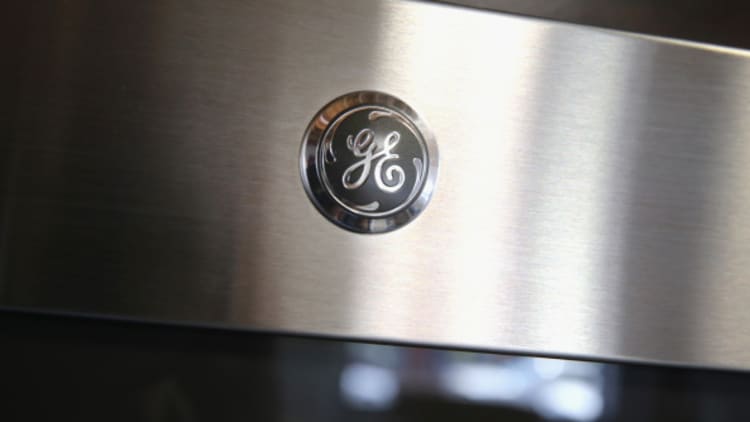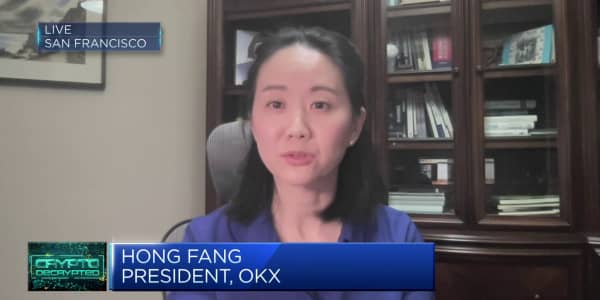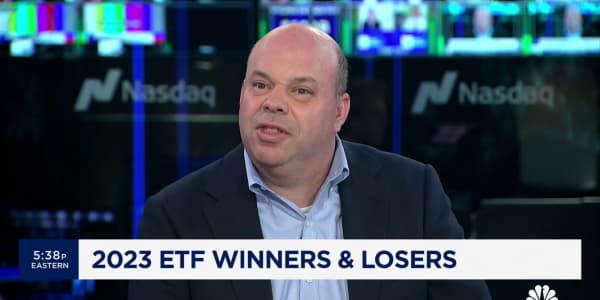Investors have plenty of reason to be skittish on dividend stocks right now. GE just did the unthinkable for a blue-chip stock, cutting its dividend to a penny.
There are multiple risks to corporate profits that could make it more difficult for reliable dividend payers to meet their commitments. Fears are mounting that the stock market is at peak earnings and the strong U.S. dollar will continue to hit bottom lines. The global macroeconomic view is mixed, with the slowdown in China and the trade war continuing to weigh on investors' outlook. And dividend stock yields don't look as enticing compared to bond yields when the Federal Reserve is raising rates.
Not to mention, October has been a frightening month for the market -- if the worst were to occur, a bear market, one need only look back to 2008-2009 to know how quickly dividends can disappear. A total of 527 companies cut their dividends in 2009, according to S&P Dow Jones Indices, including Alcoa, Dow Chemical, Macy's, JP Morgan Chase, Bank of America and, yes, GE. Not every company can be a Coca-Cola, which has paid a dividend for more than five decades without an interruption — one reason Warren Buffett is a longtime shareholder.
In addition, companies are increasing share buyback activity at a greater pace than they are dividend payouts. But the dividend fears in the market right now mask several truths about dividends' value to investors.
Q4 is a period of big dividend increases
To start, the fourth quarter historically has been the market period in which dividend payouts increase. Dividend payouts were highest in the fourth quarter for each of the past five years, according to data from S&P Dow Jones Indices. And even with stock buybacks more popular, dividends continue to be paid out at a record pace.
Companies in the paid out a record $109.2 billion in dividends in the first quarter, a record $111.6 billion in dividends in the second quarter, and another record $115 billion in third quarter dividends. Another record is likely in Q4, according to S&P Dow Jones Indices data. Stock buybacks have been much higher, nearing $200 billion in recent quarters.
Another important point about dividend: Periods of stock volatility often lead investors to seek out dividend stocks for the income profile. The recent market tumult may be encouraging investors back into dividend ETFs. The SPDR S&P Dividend ETF (SDY) has taken in $1 billion in the past week.
The current pace of dividend increases is healthy. The average dividend increase so far this year has been 14.38 percent, the highest since 2014, when average dividends increased 17.5 percent. While that sounds good, it is important to note what happened in 2015: The most dividend cuts since 2009, when close to 400 companies trimmed their payouts, according to S&P Dow Jones data. It also is a lot lower than the recent buyback frenzy, which increased 43 percent.
For investors who rely on dividend for income, especially in retirement, dividend ETFs that invest in companies that have a history of consistently paying out and increasing dividend payments to shareholders mitigate the risk of a single dividend suddenly disappearing. With record earnings announcements and a history of fourth-quarter dividend increases, there are attractive opportunities now in dividend ETFs, said Todd Rosenbluth, head of ETF & mutual fund research at CFRA.
The most-popular dividend ETFs
| ETF | Assets | Cost | Ticker |
|---|---|---|---|
| Vanguard Dividend Appreciation | $28 billion | 0.08% | VIG |
| Vanguard High Dividend Yield | $21.5 billion | 0.08% | VYM |
| iShares Select Dividend | $16.6 billion | 0.39% | DVY |
| SPDR S&P Dividend ETF | $16.6 billion | 0.35% | SDY |
| Schwab U.S. Dividend Equity | $7.9 billion | 0.07% | SCHD |
Source: XTF.com, 10/31/2018
Rosenbluth said ETFs focused on dividends are attractive even as the Federal Reserve continues to raise interest rates because many large-cap companies are expected to raise dividends on the backs of strong earnings. "There is also a wide array of companies with a track record of raising dividends," Rosenbluth said. "These companies typically maintain that as long as fundamentals are sound. There are a number of companies who revisit their dividend policy in the fourth quarter, and companies tend to revise their dividends on a cyclical basis, so we're likely to see a good amount of firms do this in the fourth quarter."
They're the last to go, and companies make sure that their cash flow can support those. Most investors have no tolerance for cutting dividends.Howard SilverblattS&P Dow Jones Indices senior index analyst
Record earnings plus solid corporate fundamentals mean that this trend of increasing dividends and buybacks will continue, according to Howard Silverblatt, senior index analyst at S&P Dow Jones Indices. He noted that rising interest rates encourage companies to increase their dividends in order to keep investors from parking their money in safe havens where yields are rising, such as bank certificates of deposit. "There is security in dividend-paying stocks," Silverblatt said. "Traditionally, investors want dividend payers because they have a track record of paying their dividend and increasing it while continuing to run their companies."
Large-cap companies with a track record of paying out dividends, and increasing them on a regular basis, are relatively safe income bets for investors because dividend cuts and suspensions are moves of last resort, Silverblatt said. "They're the last to go, and companies make sure that their cash flow can support those," he said. "Most investors have no tolerance for cutting dividends."
While dividends are the "last to go," they are also the last to come back once they are eliminated. Buybacks, meanwhile, can be "turned on and off" as companies see fit based on their overall balance sheet health. Still, Silverblatt said while buybacks are the bigger trend of late — and Buffett is a big fan of this form of shareholder rewards as well — investing in dividend ETFs rather than buyback ETFs is a less volatile strategy given the "permanence" of many dividend payouts.
Recent dividend ETF flow winners
| ETF | Q4 flows |
|---|---|
| SPDR S&P Dividend ETF | $1 billion |
| iShares Core Dividend Growth | $370 million |
| iShares Core High Dividend | $349 million |
| Vanguard High Dividend Yield | $342 million |
| Vanguard Dividend Appreciation | $204 million |
Source: XTF.com, 10/31/2018
Rosenbluth said there are two types of dividend ETFs — ones that focus on growth, and ones that focus on yields. The growth ones tend to have lower yields, but you will see dividend growth in the future. Some growth sectors tend to perform better than others in a rising rate environment, Rosenbluth said, so focusing on dividend-paying ETFs invested heavily in those sectors make the most sense for the current environment. The iShares Core Dividend Growth (DGRO) ETF, WisdomTree U.S. Quality Dividend Growth ETF (DGRW) and Vanguard Dividend Appreciation ETF (VIG) are a few examples that focus on dividend growth and are more exposed to cyclical sectors.
Still, investors were not flocking to dividend ETFs for much of 2018, with relatively small inflows this year compared to other equity ETF categories, according to data provided by Refinitiv (formerly Lipper). Overall, ETFs have taken in $205.38 billion. Equity ETFs have seen inflows of $132.44 billion, of which dividend ETFs make up $2.87 billion of those inflows. Bond ETFs have taken in nearly $70 billion.
Recent top dividend ETF performance
| ETF | One-year return | YTD return |
|---|---|---|
| VictoryShares Dividend Accelerator | 9.20% | 2.60% |
| Invesco Dow Jones Industrial Average Dividend | 9% | 3.10% |
| Vanguard Dividend Appreciation | 8.80% | 2.70% |
| WisdomTree US Dividend Growth | 7.70% | 1.30% |
| iShares Core High Dividend | 7.50% | 1% |
| S&P 500 | 6.30% | 1.90% |
| DJIA | 8.70% | 2.30% |
Source: XTF.com, 10/31/2018
Over the long term, investors should understand that they are getting more safety through these funds than through the broader market, trading some return for the security of steady, predictable dividend payments, Rosenbluth said.
Using a dividend fund strategy isn't for everyone, and there is a fair case to be made that a focus on total return will ultimately provide retirement investors with the assurance they need that there portfolio is large enough to provide a steady stream of income.
Colin Drake, principal at Marin Financial Advisors, said while using dividend ETFs to generate income in retirement is a valid strategy, he prefers to invest in low-cost funds that focus on growth rather than yield with the goal of generating the highest total return. "We rely more on safe-withdrawal rate research and focus on total return," he said. "We ignore how much investments are yielding in favor of conserving the long-term, sustainable withdrawal rate of 4 percent to 5 percent annually."
—By Mike Schnitzel, special to CNBC.com





